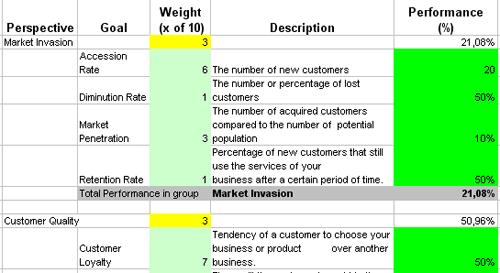Article updated on December 2, 2021
What is the role of Customer Relationship Management KPIs in monitoring business performance?
It can happen that the sales department doesn’t have the information or tools needed to convert leads, that they get stuck in certain steps of the funnel. Or pipelines can get stretched thin and negotiations can be left unfinished or take too long to close.
Or marketing, sales, and customer care don’t share useful information and insights, and customer churn rates rise alarmingly. Or your customer service team works overtime, but can’t complete all tickets in a timely manner.
These are just some of the signs of a “malfunction” in the business system that are destined to become irremediable problems if they are not addressed immediately and decisively. How to precipitate such complex problems that are often perceived as generic in order to identify and solve them? How can the real reasons behind recurring and worrying situations be traced in order to implement the necessary corrective measures?
The answer is never unique or trivial – in fact, it will be necessary to implement a series of targeted actions involving different departments of the organization – effective assistance can come from CRM software and in particular from the metrics they track, which makes it possible to correctly and accurately measure a company’s performance.
The role of Customer Relationship Management KPIs in monitoring business performance
Customer Relationship Management systems influence company goals and therefore impact how teams operate. This is the picture that emerges from the very long list of statistics compiled by financesonline. Here are just the figures relating to the benefits experienced in terms of return on investment:
Such a significant result is obtained by fully exploiting the functions of CRM, in particular, its ability to provide a dynamic, exact, and evolving overview of the network of relationships with customers. Knowing how to use the CRM in a systematic way makes it possible to:
A CRM (Customer Relationship Management) system is increasingly important today: it organizes, connects and analyzes all the data collected along the path of a specific customer, both quantitative and qualitative. It allows a succinct view of their consumption and their position with respect to the brand. So far, a theoretical reflection. The question we pose in this post is instead a pragmatic one: how can companies make the best use of the knowledge – rich but sometimes destined to remain “silent” if unused – that is contained in CRM applications?
Customer Relationship Management KPIs: a fundamental support for developing the best business strategies
To make the CRM system work at its full potential, it is necessary, first of all, to set objectives that are specific, measurable, achievable, relevant, and timely.
In order to make the objectives measurable, it is first necessary to assign specific indicators (KPI: Key Performance Indicator) to each of them, which are chosen to objectively measure a specific aspect of the company strategy (KPIs vary, in fact, according to the sector and the company objectives).A KPI expresses a measure; therefore it is quantifiable It is used to determine whether and at what rate of success a company is achieving its goals.
In other words, selecting particular KPIs against specific business objectives and monitoring their progress allows you to determine if a CRM-based strategy is working over time. That is, is your CRM strategy centered and effective? For example, if the goal is to increase customer retention, it won’t make sense to focus on the number of open sales opportunities; on the other hand, if the goal is to shorten the sales cycle, the growth rate of the mailing list will probably not be as essential.

Below, we have selected the most used KPIs and collected them in three groups, related to sales, marketing, and customer care performance. These are, of course, absolutely permeable subdivisions that have a purely indicative value.
The main Customer Relationship Management KPIs for measuring sales performance
CRM provides the sales team with a set of organized data that can be used to manage the pipeline, providing a view of the various deals, in the different phases, from opening to closing. It can also be used to measure sales performance. Knowing the main customer relationship management KPIs, the ones that express the synthesis of this wealth of information, becomes essential.
1. Close rate and average value of deals
The close rate is the number of deals closed compared to their total number.While every sales team uses the close rate as a measure of success, keep in mind that thisalone does not always account for the entire story.
@BrandBrofessor Omg spill the tea
— malika Tue May 04 09:29:08 +0000 2021
How much are closed deals actually worth? To find out, we use higher average deal size: the highest average value of deals. By weighting the evidence offered by both KPIs, it will be possible to have a more complete and correct view of the actual value of the pipeline.
2. Upsell Rate
The upsell rate is the number of customers who upgrade their purchase, choosing a higher, more expensive version of a product or service. CRM can help increase the upsell rate by providing useful information to predict which leads are most likely to turn into a “premium” direction.
3. Length of pipeline stages
How long does the average lead stay in each stage of the pipeline? What is the exact moment when negotiations tend to stall? Monitoring each stage allows you to identify any bottlenecks in the sales process.
Again, the data collected in CRM must be interpreted. Only once you have captured the KPIs can you proceed with targeted initiatives. For example, the solution could be to automate those modules of the process that shows the most friction.
4. Sales Cycle Duration (or lead velocity)
This KPI is closely related to the previous one. Lead velocity measures how long, on average, it takes to close a deal.
A small alert: the duration of the sales cycle is often greatly influenced by the number of decision-makers involved. There are factors that are beyond the control of the sales team, such as the price of the product or service and the number of people involved in the purchasing decision.
The higher the price and the more crowded the decision phase, the longer the sales cycle will be. Having a responsive indicator of the speed with which negotiations are closed means you can intervene promptly when you need to.
The main Customer Relationship Management KPIs for measuring marketing performance
CRM systems allow you to gather a wealth of information about lead generation, opportunity management, and customer service. Key marketing metrics, when analyzed and monitored, allow you to develop more successful personalized communications.
5. Customer Lifetime Value or CLTV (consumer lifecycle value).
To calculate CLTV, 4 types of information are needed:
To obtain the average Customer Lifetime Value, multiply the average value of the customer by the average customer lifetime. By monitoring the CLTV it will be possible to implement, starting from the enabling of specific functionalities in the CRM system, all the initiatives aimed at:
6. Customer Acquisition Cost (CAC)
The CAC is the total spend required to acquire a new customer and is calculated by dividing the total acquisition spend by the customers acquired. The goal for a marketing team is to progressively decrease the CAC. In this case, effective customer management can:
7. Revenue generated by email marketing campaigns
To know if an email marketing campaign is working, it’s not enough to refer to the number of clicks or low unsubscribe rates. These figures alone do not account for the real contribution to the company’s profits. Analyzing the earnings of each individual campaign, on the other hand, can help formulate informed hypotheses about the aspects of the brand (and its products and services) that customers recognize, appreciate, and share.
CRM does just that: it offers insights into behaviors and preferences. Knowing what customers want allows you to develop and send the right messages to the right people, while simultaneously intervening on a number of variables: such as email length, call-to-action, subject line composition, image quality and quantity, and total number of emails.
Key Customer Relationship Management KPIs for measuring customer service performance
CRM not only supports activities aimed at acquiring new customers, it can also play an important role in improving the perceived quality of the customer experience. To achieve this goal, it’s a good idea to adopt specific KPIs. Here they are.
8. Net Promoter Score (NPS)
Expresses, on a scale of 1 to 10, how likely a brand’s customers are to recommend it to someone else. The NPS is the result of a survey that aims to investigate whether and how strongly a customer would recommend certain products or services. The customers surveyed, based on their responses, are divided into promoters (the enthusiastic spokespeople), passives (who rarely report and suggest to others), and detractors (who have had negative experiences and are considering switching to a competitor).
The NPS is not without its critics: it is not a reliable indicator of customer retention and is rarely correlated with the churn rate. Its greatest contribution comes at the account level: regular collection of customer feedback helps address frustrations and concerns and minimizes the risk of churn.
CRM allows you to monitor NPS trends over time. It also allows you to automate the sending of surveys and the creation of reports on results, contributing substantially to the personalization of the customer experience.
9. Abandonment rate
This is the dreaded customer churn rate, which expresses the frequency with which customers abandon a brand. It is the exact opposite of the retention rate and is calculated by dividing the number of customers who have switched to a competitor by their total number.
The more customers feel valued and heard, the more likely they are to remain loyal to the company. Thanks to some of its features, CRM can make it easier for the brand to demonstrate interest in the consumer. It actually tracks customer preferences, activities and interactions, and uses that information to:
10. Average time to resolve tickets
This KPI, which can be measured in days or hours worked, is used to understand the steps in which individual operators encounter the most difficulty. If investigated in greater depth (in the occurrences of certain tickets, for example), it can also account for the speed with which the response to the client is made – and how effectively – it is done.
A properly implemented CRM system can lighten the workload of the customer service team. Thanks to more relevant and personalized information made available at the right time, the average time to resolve support tickets is significantly reduced.
CRM: the starting point for personalized communication
CRM software offers brands the possibility of a unified and detailed look at the situation of the individual customer: behaviors, preferences, activities, support request tickets… all information that builds accurate profiles, stored in one place and easily accessible, available to be used in increasingly personalized and effective communications.
The wealth of knowledge organized in CRM systems must be incorporated into the solutions to be offered to clients. These solutions, in turn, must be developed from an analysis of performance indicators. The synergistic use of KPIs and CRM applications can make all the difference: Knowing how to measure the success of a business strategy is a prerequisite for making sound business decisions.









